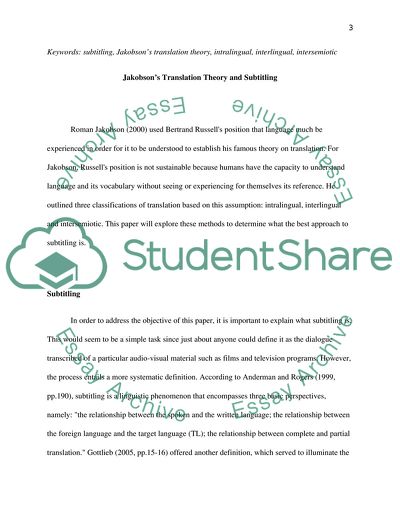Cite this document
(Jakobsons Translation Theory and Subtitling Essay, n.d.)
Jakobsons Translation Theory and Subtitling Essay. Retrieved from https://studentshare.org/social-science/1856263-roman-jakobson-divided-translation-into-three-typesintralingual-interlingual-and-intersemiotic-discuss-which-one-of-the-types-is-most-applicable-to-subtitling
Jakobsons Translation Theory and Subtitling Essay. Retrieved from https://studentshare.org/social-science/1856263-roman-jakobson-divided-translation-into-three-typesintralingual-interlingual-and-intersemiotic-discuss-which-one-of-the-types-is-most-applicable-to-subtitling
(Jakobsons Translation Theory and Subtitling Essay)
Jakobsons Translation Theory and Subtitling Essay. https://studentshare.org/social-science/1856263-roman-jakobson-divided-translation-into-three-typesintralingual-interlingual-and-intersemiotic-discuss-which-one-of-the-types-is-most-applicable-to-subtitling.
Jakobsons Translation Theory and Subtitling Essay. https://studentshare.org/social-science/1856263-roman-jakobson-divided-translation-into-three-typesintralingual-interlingual-and-intersemiotic-discuss-which-one-of-the-types-is-most-applicable-to-subtitling.
“Jakobsons Translation Theory and Subtitling Essay”, n.d. https://studentshare.org/social-science/1856263-roman-jakobson-divided-translation-into-three-typesintralingual-interlingual-and-intersemiotic-discuss-which-one-of-the-types-is-most-applicable-to-subtitling.


